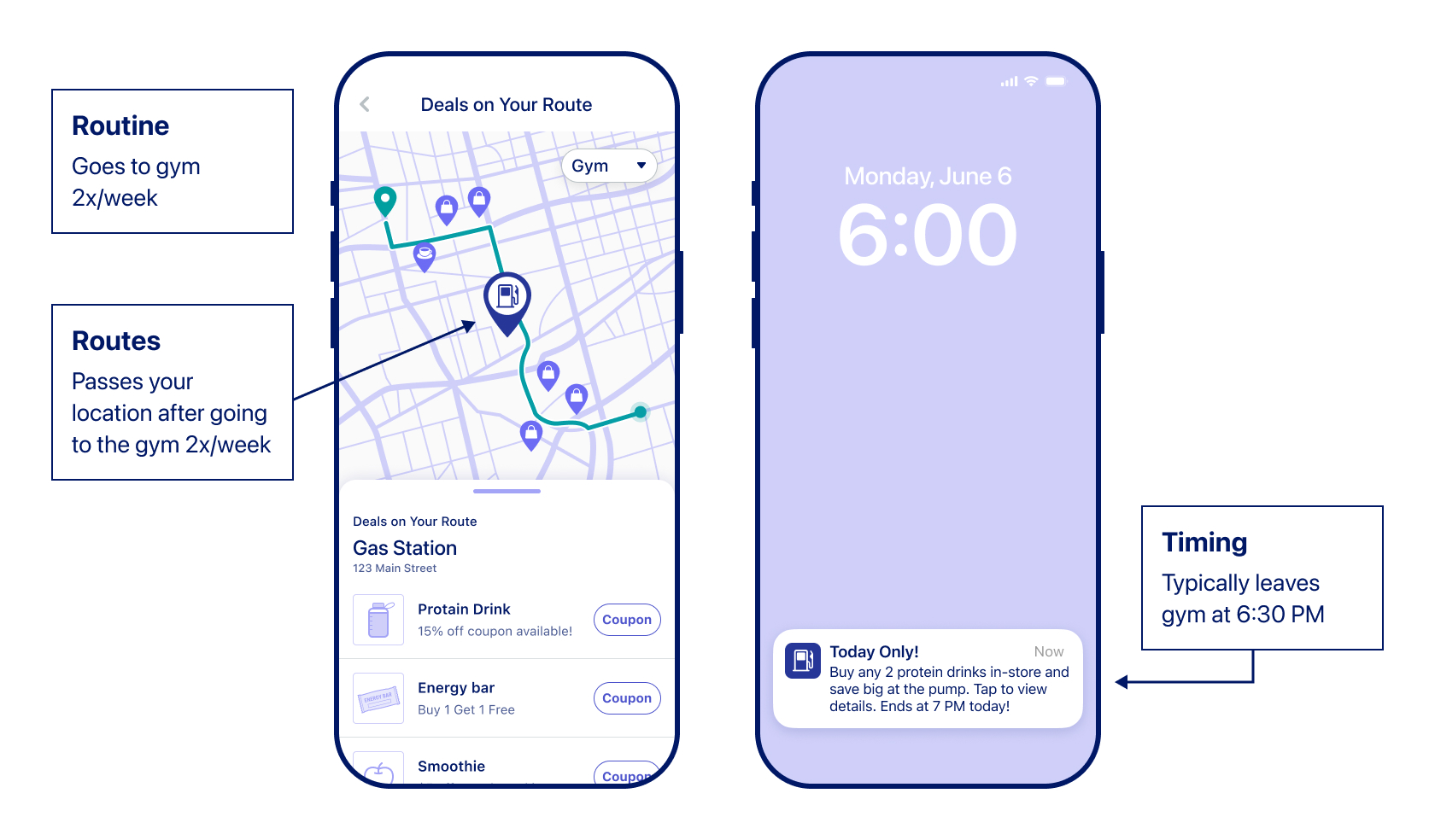Predictive personalization: Driving mobile app engagements that matter Read article


When it comes to gas stations, the purchasing decision often boils down to being at the right place at the right time. That is, the first available gas station when a drivers’ fuel light turns on. It’s all about convenience as three-quarters of U.S. drivers decide where to fuel up based on location, beating price by a narrow margin.
With driving data, fuel retailers can leverage predictive mobile marketing to grab customers’ attention when they’re in the right buying window.
Read on to learn more about the 5 Ws (and 1 H) of predictive mobile marketing for fuel retailers.
Predictive mobile marketing uses mobile phone-based data on users’ patterns and behaviors to create predictive insights that can inform hyper-personalized marketing.
Hyper-personalization is the new norm, as customers’ demand for unique, personalized experiences continues to grow. With a view into their patterns and behaviors, brands can better predict their interests and preferences, which may just be the competitive edge needed to keep customers engaged and loyal. This is important as convenience stores’ loyalty customers spend 12% more on average than non-loyalty customers.
Driving data provides valuable insights to power predictive mobile marketing efforts. It provides an in-depth view that goes beyond location data, allowing fuel retailers to create smarter segmentation based on how, when, and where their customers drive.
With Arity Predictive Mobility, these brands gain insights around the specific routes their customers take day-to-day. This enables engagement at just the right moment when a customer is likely to pass by soon, and it helps increase CPMs with better, data-informed ads that are meaningful to their routines and lifestyles.
Arity Predictive Mobility works within brands’ mobile apps, connecting to users and using their driving behavior insights to deliver unmatched personalization.
In addition to helping fuel retailers increase engagement with their current customers through in-app experiences, Arity Predictive Mobility also helps encourage new or lapsed customers to visit again.
For fuel retail brands specifically, driving patterns can help them send app users relevant messages before they even hit the roads and are likely to pass by. This ensures their brand is top of mind before they even start driving, encouraging users to stop, fuel up, and shop in their C-Stores.
So, what does this look like in action? Here’s an example of how fuel retailers can reach customers with driving data and predictive mobile marketing.
Let’s say that Favorite Gas Station wants to highlight the convenience of mobile ordering as a way to engage their mobile app users. With access to driving data, they can identify typical driving patterns that could indicate customers’ habits and routines, such as:
With these behavioral insights, Favorite Gas Station can now serve relevant offers at key moments, encouraging customers to avoid slowing their day down by ordering ahead via mobile app.

For instance, Favorite Gas Station could send mobile notifications and offers to a customer at 6:00 p.m. before they typically leave the gym, encouraging them to take the route that lets them redeem on the way home.
Users will be more likely to make that quick, convenient stop when the offer is along their usual route and the order is ready to go when they arrive. Not to mention a healthy snack after a hard workout session at the gym can feel especially rewarding, which gives fuel retailers an opportunity to connect with these customers in a meaningful way.
Ready to learn more? Click here for more on how driving data can help boost retail traffic.